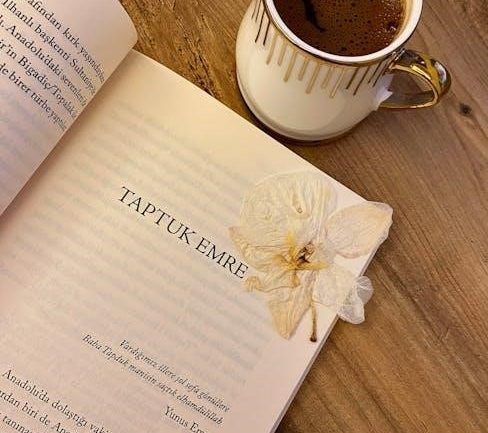Ribbon hair bows offer a fantastic way to personalize your style. These versatile accessories can be easily crafted at home, allowing for unique designs. This guide explores simple methods for creating beautiful bows, ensuring a fun and rewarding experience.
Why Make Your Own Ribbon Hair Bows?
Creating your own ribbon hair bows is more than just a craft; it’s a way to express your unique style and save money. Instead of purchasing bows from boutiques or department stores, you can easily make them at home. This allows you to choose from endless styles and colors, making bows that perfectly match your outfits or specific occasions like physie events. Furthermore, crafting bows at home lets you experiment with different materials such as satin or grosgrain ribbon, or even velvet, giving you the freedom to create truly one-of-a-kind accessories. It’s a rewarding DIY project that adds a personal touch to your look and makes thoughtful gifts.

Materials Needed for Ribbon Hair Bows
To begin, you’ll need ribbons, suitable for bow making, like satin or grosgrain. Essential tools include scissors, a hot glue gun, clips, and possibly a needle and thread.
Types of Ribbon Suitable for Bows
Selecting the right ribbon is key for beautiful and durable bows. Satin ribbon, with its smooth and shiny surface, is a popular choice for adding elegance and a touch of glamour, especially under stage lights. Grosgrain ribbon, known for its ribbed texture and durability, is another excellent option, offering a more structured look. Velvet ribbon provides a luxurious, soft feel, perfect for special occasions. Consider the width of the ribbon, as different widths create different bow dimensions. Additionally, experimenting with materials like leather or fabric strips can lead to unique, personalized bows. The rules for some activities, like Physie, may specify the use of satin or grosgrain. Ultimately, the choice depends on the desired aesthetic and the bow’s intended use.
Essential Tools and Accessories
Creating ribbon hair bows requires a few essential tools and accessories. A good pair of scissors is necessary for precise ribbon cuts. A hot glue gun is vital for securing the ribbon layers together quickly and effectively, although fabric glue can also be used; Clear nail polish is helpful for sealing the cut ends of the ribbon, preventing fraying. Additionally, ribbon clips or barrettes are needed to attach the bows to hair. Some may opt for using pre-existing ribbon bases; For those crafting bows for children, soft Velcro can be added to clips for a better grip. A needle and thread are also useful for those who prefer hand-sewing elements. Having these tools and accessories on hand ensures a smooth crafting process.
Basic Ribbon Bow Techniques
Mastering basic techniques is key to making beautiful ribbon bows. This section covers methods like the single and double loop, providing a foundation for more complex designs.
The Single Loop Bow Method
The single loop bow is a fundamental technique for beginners. Begin by creating a loop with your chosen ribbon. Bring the ends together, forming a single loop and adjust the size to your preference. Secure the center with a smaller piece of ribbon, wrapping tightly and knotting it at the back. This method is ideal for a simple, classic look. You can use glue for extra security if desired. The single loop bow serves as a basic starting point and can be customized with different ribbon widths and colors. It is quick to make and requires minimal materials, making it a great option for a quick accessory.
The Double Loop Bow Method
The double loop bow method creates a fuller, more voluminous bow compared to the single loop. Start by making two loops, one on each side of the center of the ribbon. Adjust the loops to be roughly the same size. Then, pinch the center of the bow where the loops meet. Secure the pinched center tightly with a separate piece of ribbon. You can use glue for extra security if desired. This method allows for more dimension and visual interest. The double loop design is suitable for various hair accessories and adds a touch of elegance. It’s a step up from the basic single loop, offering a more sophisticated look.

Advanced Ribbon Bow Designs
Beyond basic bows, explore layered and butterfly styles for unique designs. These techniques create dimensional, eye-catching bows perfect for special occasions or adding extra flair to your everyday look.
Creating Layered Ribbon Bows
Layered ribbon bows offer a sophisticated touch, adding depth and dimension. Begin by creating several single loop bows of varying sizes, using different colors or patterns for visual interest. Secure each bow individually, using hot glue or needle and thread. Start with the largest bow as your base, then attach the smaller bows on top. Position them slightly off-center for a dynamic look. Experiment with different ribbon widths and textures to enhance the layered effect. This technique allows for endless creativity, resulting in a stunning, custom-made hair accessory. Remember to trim and seal ribbon ends to prevent fraying. This ensures the longevity and professional look of your creation.
Making Butterfly Ribbon Bows
Butterfly ribbon bows offer a whimsical and charming design, resembling delicate butterfly wings. Start by creating two identical loops, each forming one side of the butterfly. Pinch the center of each loop and secure it with thread or a small piece of ribbon. Then, layer the two loops on top of each other, creating the butterfly shape. Use a small piece of ribbon to wrap and secure the center, forming the body. You can add small antennae using thin wire or ribbon. Adjust the loops for desired wing shape and size. This style can be embellished with beads, glitter, or other decorative elements for a unique touch. Ensure all ends are properly sealed to avoid fraying.

Attaching Ribbon Bows to Hair Accessories
Securely attaching your ribbon bows to hair accessories is crucial for their wearability. Methods include using glue for clips, barrettes, and headbands. These techniques are important for a professional look.
Using Clips and Barrettes
Attaching ribbon bows to clips and barrettes is a popular method for securing them in hair. Using a hot glue gun or fabric glue is generally the preferred way to adhere the bow to the metal. For alligator clips, apply the glue generously to the clip’s surface, ensuring a strong bond. Consider adding a piece of soft velcro to the inside of the clip for fine hair to prevent slipping. Small ribbon clips can also be used, by sliding them into the back knot of the bow. This provides a simple, sleek attachment. Ensure the glue is dry before use to avoid any accidental detachment. This method also allows the bow to be easily moved from one accessory to another.
Attaching Bows to Headbands and Ties
Securing ribbon bows to headbands and hair ties offers another stylish way to wear them. For headbands, you can glue the bow directly onto the fabric or plastic, ensuring the adhesive is compatible with the material. To create a more secure attachment, consider wrapping a thin piece of ribbon around the headband and bow, securing it with glue or a few stitches. For hair ties, a similar approach can be used, gluing the bow onto the elastic or using a ribbon to tie it securely around the band. If you are using an elastic band, you can add it to the bow yourself. This method ensures that the bow stays put while you move. Be sure to allow ample drying time for the glue before wearing.

Tips for Perfecting Ribbon Hair Bows
To perfect your ribbon bows, consider stiffening them with starch or fabric stiffener. Secure all ends and attachments firmly. These steps will ensure durability and a lasting beautiful shape.
Stiffening and Securing Bows
Achieving perfectly shaped and long-lasting ribbon bows often requires a few extra steps. Stiffening is crucial for maintaining the bow’s form, preventing it from becoming limp or misshapen. Various methods can be employed; consider using a fabric stiffener, starch spray, or even a diluted glue mixture. Apply your chosen stiffener evenly, allowing it to dry completely before further handling. To ensure the bow stays securely in place, reinforce all connection points with hot glue or strong fabric glue. For clips, adding a small piece of velcro inside helps grip fine hair. Pay close attention to the center knot or wrap, ensuring it’s tight and secure, as this is where the bow’s structure is held together. These extra steps will not only keep your bows looking great but also ensure they hold up well over time.
Finishing Touches for Durability
To enhance the longevity of your handmade ribbon bows, a few finishing touches are essential. Begin by carefully trimming all ribbon ends to prevent fraying; sealing these edges with a clear nail polish is a good solution. This will keep the cut ends from unraveling. If you’ve used glue, ensure all areas are completely dry before handling. Consider adding a small, extra layer of glue around the center wrap to provide added reinforcement. For bows attached to clips, ensure that the clip is securely glued to the bow and test it before using it. These extra steps will make your bows more durable, ensuring they withstand daily wear and tear. It’s these details that transform a beautiful bow into a lasting accessory.




